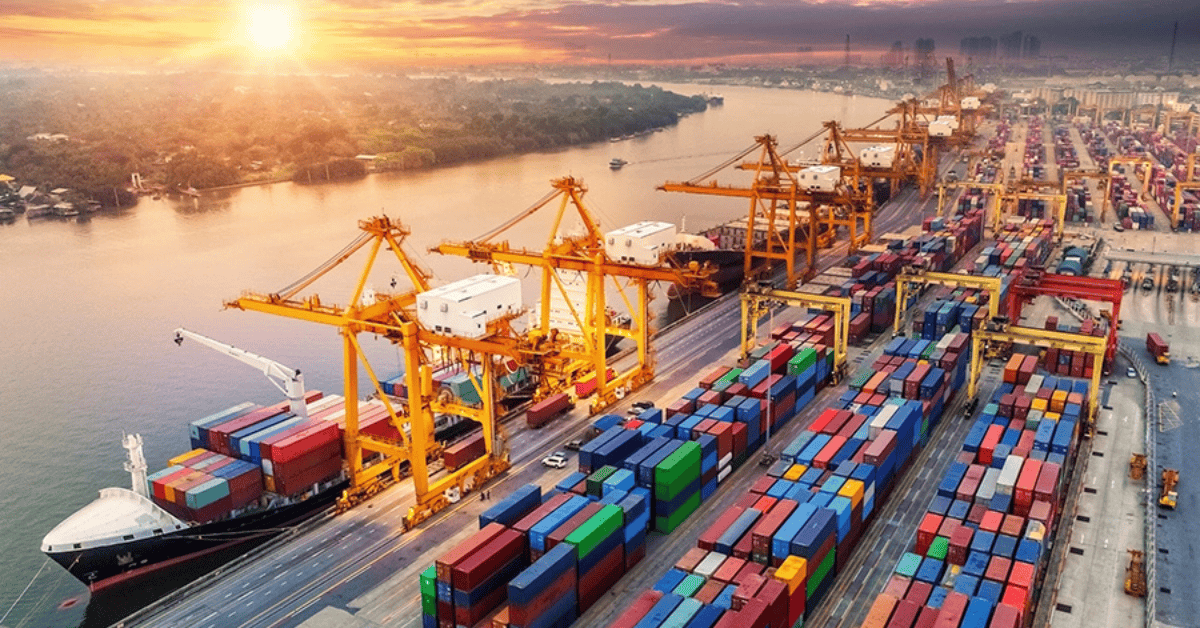A 3PL’s Guide to the US Warehousing Shortage

As consumer demand continues to put the squeeze on the global supply chain, warehouses around the country are rapidly reaching capacity.
The Wall Street Journal reported that the average industrial vacancy rate in the United States recently fell to 4 percent, the lowest rate on record. While the U.S. used 800 million square feet of industrial storage space in 2020, companies used more than 1 billion square feet by December 2021.
With companies forced to compete for remaining space around the busiest national ports, warehousing rental prices are rising to new heights. Rental rates for industrial space increased in 2021 by more than 10 percent year-over-year, according to real-estate firm CBRE.
Approaching the holidays, businesses are seeing an abnormal seasonal surge escalating the already-severe warehousing and supply-chain issues. Here’s what you need to know about the root causes of the space shortage and why companies are turning to third-party logistics partners (3PLs) to minimize disruptions.
How the Pandemic Fueled the 3PL Warehouse Shortage
When the COVID-19 pandemic first hit the U.S., consumer spending fell sharply. But it rebounded over the course of the year. McKinsey found that the national savings rate increased by nearly 20 percentage points in 2020, leaving some households in better positions to spend.
Despite accelerating inflation, consumer spending rose by 1.3 percent in October, which doubled the increase of the previous month, according to data from the U.S. Department of Commerce. Without the infrastructure to support the sudden surge, ports became backlogged and wait times for vessels to unload jumped from two to eight days.
The ports at Los Angeles and Long Beach, California — responsible for nearly half of the country’s imports — broke seven records in less than four weeks of September. On a particularly busy Friday, the ports had 147 ships between the two locations, reported Business Insider.
As a result of the rising consumer demand and consequent delays, companies are stockpiling more goods in their warehouses to keep their sales and production on track. Competing with retail giants like Amazon for more storage space is out of the question for small- to medium-sized questions.
That’s where logistics providers come in.
Why More Companies Are Turning to 3PL Warehousing Services
Now more than ever, companies are benefiting from the assets and expertise of third-party logistics providers to overcome the nationwide supply-chain struggles. There are three key reasons why companies are choosing to outsource some or all of their warehousing to a third-party provider:
1. 3PL Warehousing Is More Cost-Effective Than Building or Leasing
As long as demand continues to exceed available space, companies will struggle to find new warehouses to house their products and materials. More than 500 million square feet of storage are already in development, so it may also be difficult for companies to find the time, space or resources to build new warehouses.
Instead, leaders can immediately access available space by partnering with a 3PL. Not only does this ensure that companies avoid the rising leasing and construction costs, but it also allows companies to leverage the state-of-the-art technology that a 3PL can provide.
2. A 3PL Can Deliver Turnkey Logistics Solutions
Third-party logistics partners have decades of experience streamlining warehousing processes for companies of all sizes. A 3PL works to create custom solutions that maximize efficiency and keep businesses on track, even amid these unprecedented delays. While the 3PLs navigate the current complexities of the supply chain, company executives can stay focused on their operations.
3. Nationwide Networks Help You Overcome Labour Shortages
A nationwide labor shortage makes it increasingly difficult for companies to secure the staff needed to manage their warehouses. In July, the warehouse and transportation industry had nearly 400,000 openings, according to Forbes. Add in the holiday hiring rush, and the outlook is daunting for companies staffing their own spaces.
Third-party logistics providers already have nationwide networks of owned assets, experienced staff and vetted partners they can quickly mobilize. 3PL partners’ highly-trained teams ensure you don’t have to worry about ramping in new employees. With the support of 3PLs, companies across industries can effectively grow, scale and adapt to changing trends.
Strengthen Your Business with 3PL Warehousing Expertise
Armstrong is the largest asset-based provider of commercial logistics services in the US. With our robust 3pl warehousing, transportation, and fulfilment solutions, your company can stay agile and scale confidently — even during a 3pl warehouse shortage.
Keep your operations running smoothly by letting our experts handle your logistics needs. Call us at 800.288.7396 or request a free quote online today.
Frequently Asked Questions
- Why is there a 3PL warehouse shortage in the US?
– The 3PL warehouse shortage is driven by booming consumer demand, increased e-commerce activity, and global supply chain disruptions. As companies stockpile more inventory to avoid delays, available warehouse space has tightened dramatically, pushing businesses to seek 3PL solutions. - How does a 3PL warehouse service work?
– A 3PL warehouse service manages your inventory from receiving to storage to order fulfilment. They use established facilities, trained staff, and logistics systems to keep your goods moving, helping you scale without investing in costly warehouse space. - What are the benefits of using 3PL logistics?
– 3PL logistics providers offer cost savings, nationwide networks, advanced tracking technology, and expert support. They help you avoid large capital investments in warehouses, reduce labour headaches, and keep your supply chain flexible — even during market disruptions. - When should my business consider 3PL warehousing?
– If you’re facing high warehousing costs, struggling with staffing, or expanding into new regions, partnering with a 3PL warehousing provider can help. It’s also ideal if you want to keep up with seasonal demand or mitigate risks from supply chain volatility.
